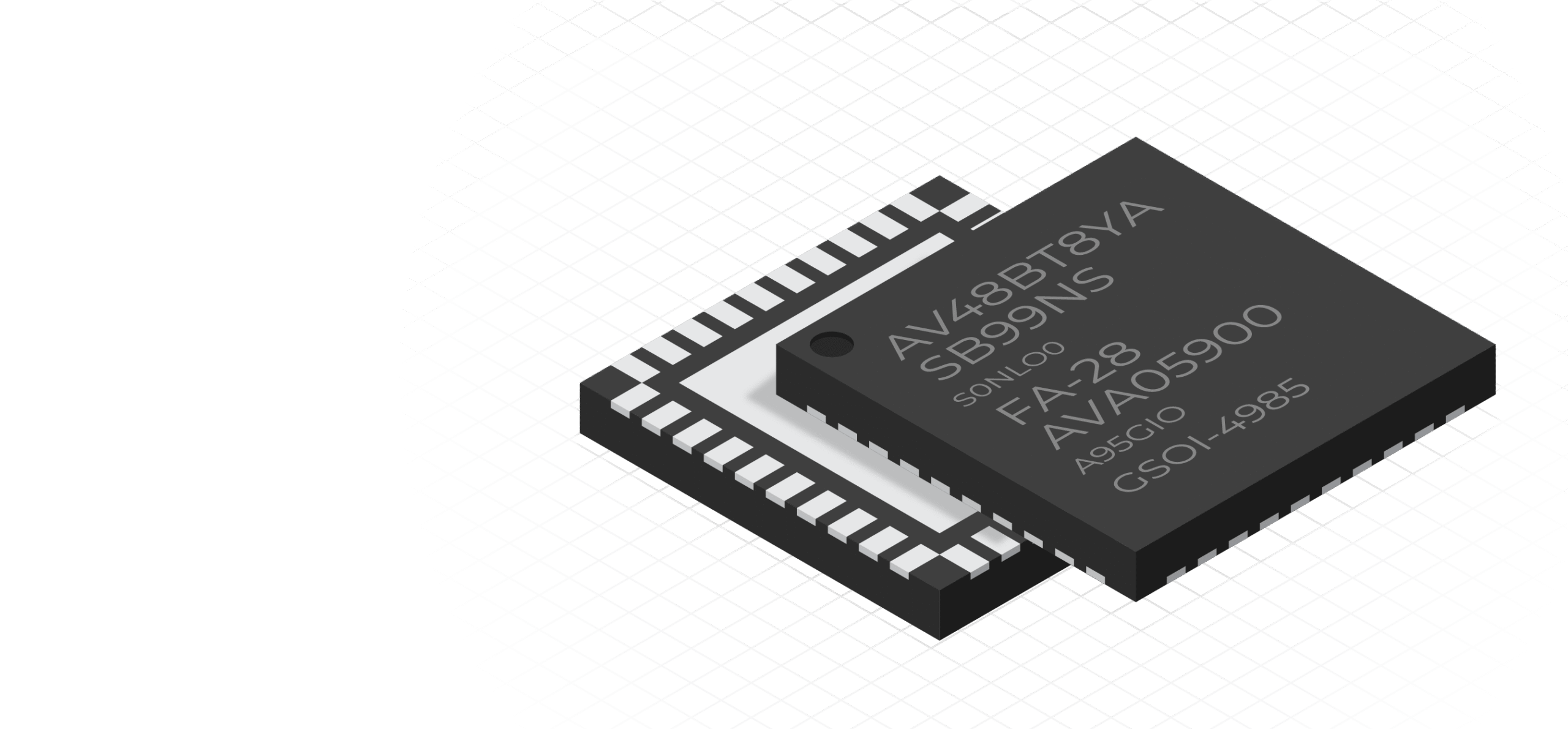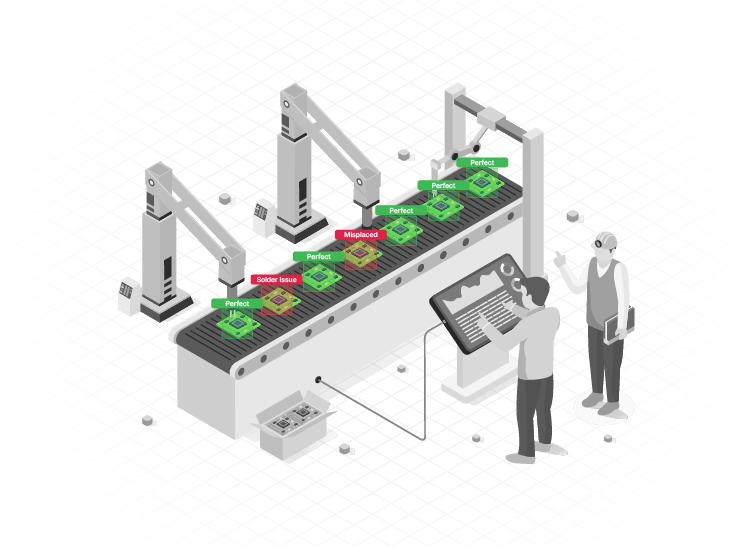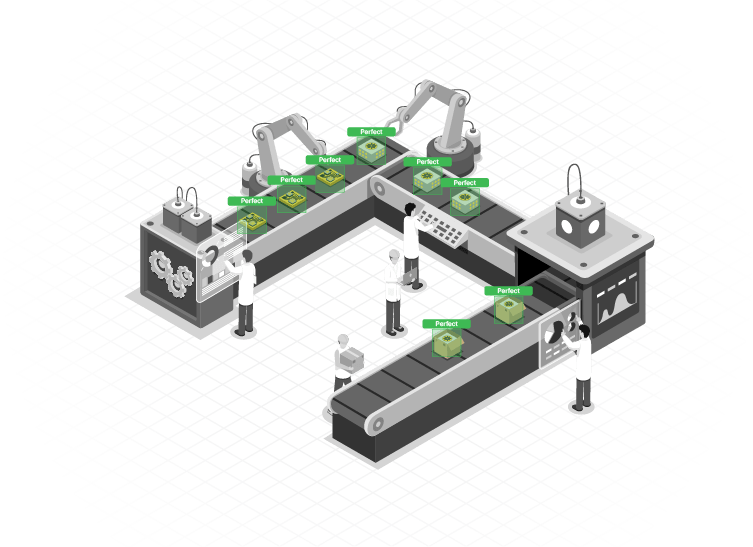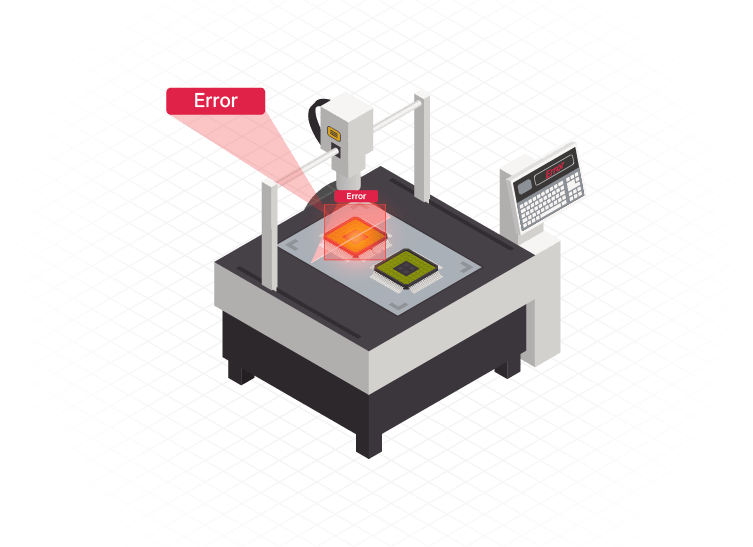Package-On-Package (PoP) Assembly Validation
Verify Every Layer. Validate Every Connection. Stack with Confidence.


Package-on-Package (PoP) is central to high-density mobile and consumer electronics, allowing multiple dies to be vertically integrated. But even the slightest vertical misalignment, offset solder balls, or warpage can lead to latent electrical failures that are hard to catch during final testing.
AI-powered PoP Assembly Validation uses advanced computer vision systems to inspect stacked die alignment, verify solder ball contact, and confirm Z-axis symmetry before the final reflow step. These inspections ensure mechanical integrity, electrical continuity, and proper height uniformity across units.
Even a slight X-Y or rotational offset between the top and bottom packages can compromise interconnects.
Incomplete, tilted, or shifted ball contacts often go undetected until after reflow or in final test.
Mechanical stress during stacking can deform the top die, leading to contact failure or packaging instability.
Manual or 2D inspection can’t detect vertical skew or stack height irregularities, which are critical in PoP.
Captures vertical alignment, height, and planarity using stereo or laser triangulation imaging.
AI verifies the concentricity and location of each solder ball against landing pads across layers.
Detects bowing, tilt, or sagging in the top die pre-reflow, reducing latent defect risks.
Assigns assembly units into pass/fail/rework bins based on deviation from set tolerances.


We begin by identifying the optimal point for PoP validation, usually after top package placement but before reflow. Fixture mapping includes robotic arm paths and hold time.
Combining top-down visual inspection with structured light or laser triangulation systems, we capture full X-Y-Z data of the stacked unit in motion.
Training includes past examples of vertical tilt, side-shift, solder ball misalignment, and package deformation, enabling the model to distinguish between acceptable and critical faults.
Each inspected unit is tagged with height maps and alignment metrics. Results are pushed into the MES for traceability, and robotic sorters are triggered to route the unit based on tolerance bins (pass/rework/fail).
Stay updated with the trending and most impactful tech insights. Check out the expert analyses, real-world applications, and forward-thinking ideas that shape the future of AI Computer Vision and innovation.
People usually don’t think about logistics until there’s a delay in order delivery. On the other hand, there are millions of products that move across borders every single day, as their journey includes going through different ports, warehouses and distribution centres before the product reaches its respective owner. So there’s a lot that happens behind […]

CEO & Co-founder
Some achievements do not arrive with loud announcements or dramatic celebrations. They arrive quietly, almost gently, carrying a kind of weight that only people close to the work fully understand. WebOccult’s Best Paper recognition at the IEEE was one such moment. Out of more than 450 research papers submitted from across the world, only five […]

CEO & Co-founder
When we discuss the ways to improve quality in factories today, one solution that often comes up is Computer Vision in manufacturing. Supervising a production line makes it clear how easily small issues can go unnoticed. A small crack, a misplaced center label, or a missing screw may seem irrelevant, but these small problems can […]

CEO & Co-founder